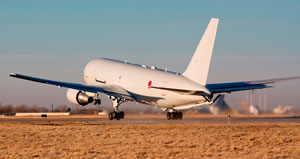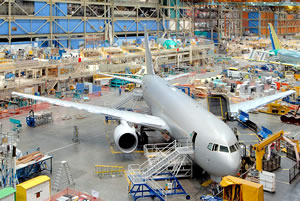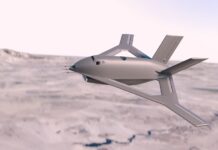Boeing has unveiled today the ‘NewGen Tanker’, the aerial refueling aircraft being proposed for the U.S. Air Force KC-X tanker competition. According to Dennis Muilenburg, president and CEO of Boeing Defense, Space & Security, the Boeing NewGen Tanker will satisfy all mandatory Air Force requirements and offer an American-made tanker that will be capable, survivable, and combat-ready at the lowest cost to the taxpayer.

Boeing considers the NewGen Tanker to be the optimal airframe size, to deliver the most capability for the lowest cost to own and operate. A wide body, multi-mission aircraft based on the proven Boeing 767 commercial aircraft, it is updated with the latest and most advanced technology and capable of fulfilling the Air Force’s needs for the transport of fuel, cargo, passengers and patients.

The multi-mission aircraft is named NewGen because it includes several state-of-the-art systems to meet new requirements, including a digital flight deck, featuring electronic displays derived from the new Boeing 787 Dreamliner, featuring a display area 75% larger than the commercial A330, considered to be the competing platform on the KC-X bid. The new Boeing aircraft will also be fitted with new-generation fly-by-wire boom, with an extended refueling envelope and increased fuel offload rate, expected to meet the Air Forces’ requirement for increased efficiency and higher refueling rate, compared to the KC-135. NewGeb will be providing simplified refueling operations, reduced workload for the aircrew and improved safety and reliability. While being computer-controlled through the fliy-by-wire system, Boeing stresses that “the new tanker will be controlled by the aircrew, which has unrestricted access to the full flight envelope for threat avoidance at any time, rather than allowing computer software to limit combat maneuverability.”

Boeing argues its new NewGen Tanker will have an advantage over the larger and heavier Airbus airplane, as it will be cost-effective to own and operate. Since the lighter B767 platform burns 24 percent less fuel than the Airbus, the NewGen Tanker is expected to save more than $10 billion in fuel costs over its 40-year service life. The Air Force released its final KC-X Request for Proposal on Feb. 24. Boeing will deliver its proposal by May 10, within the 75-day period set forth in the terms of the solicitation. The Air Force is expected to announce its decision later this year.
The new blended winglets introduced in this model will improve the aircraft performance by reducing drag. These winglets were first introduced on the Boeing Business Jet (BBJ) and Next-Generation 737-800 in 2001 and were certified on the B767-300ER in 2009. Flight test data demonstrated, that blended winglets lower block fuel and carbon dioxide (CO2) emissions by 4.4 percent on the 767. Blended winglets also improve takeoff performance, allowing deeper takeoff thrust derates, resulting in lower emissions and lower community noise. An airline that recently began flying 767-300ERs with blended winglets anticipates that each airplane equipped with the winglets will save up to 500,000 U.S. gallons of fuel annually, depending on miles flown. The airline plans to install winglets on its entire 58-airplane fleet of 767-300ERs, which could result in a total savings of up to 29 million U.S. gallons of fuel per year and a reduction of up to 277,000 tons of CO2 emissions annually.


Northrop Grumman announced on Monday (March 8th, 2010) its decision to pull out from the Department of Defense for the KC-X program. The company claim the structure of the source selection methodology defined in the RFP clearly favors Boeing’s smaller refueling tanker and does not provide adequate value recognition of the added capability of a larger tanker. “We have decided that Northrop Grumman will not protest.” Wes Bush, Chief Executive Officer and President of Northrop Grumman Corporation stated.

“While we feel we have substantial grounds to support a GAO or court ruling to overturn this revised source selection process… but taking actions that would further delay the introduction of this urgent capability would also not be acting responsibly.” Bush added. The decision paves the way for DoD to proceed awarding Boeing the sole source contract for the +50 billion multi-year program. But Bush calls DoD to bargain and play it tough despite having no alternative but buying from Boeing. “We call on the Department to keep in mind the economic conclusions of the prior round of bidding as it takes actions to protect the taxpayer when defining the sole-source procurement contract. In the previous round, the Air Force, through a rigorous assessment of our proposal, determined that it would pay a unit flyaway cost of approximately $184 million per tanker for the first 68 tankers, including the non-recurring development costs. With the Department’s decision to procure a much smaller, less capable design, the taxpayer should certainly expect the bill to be much less.” Bush concluded.

Following Northrop Grumman’s decision, the Pentagon is assessing its plans and could accelerate the selection. The Pentagon was expecting the bids by mid-May, and planned to make a decision and award the contract by September. This schedule could now be shorten by several months.















